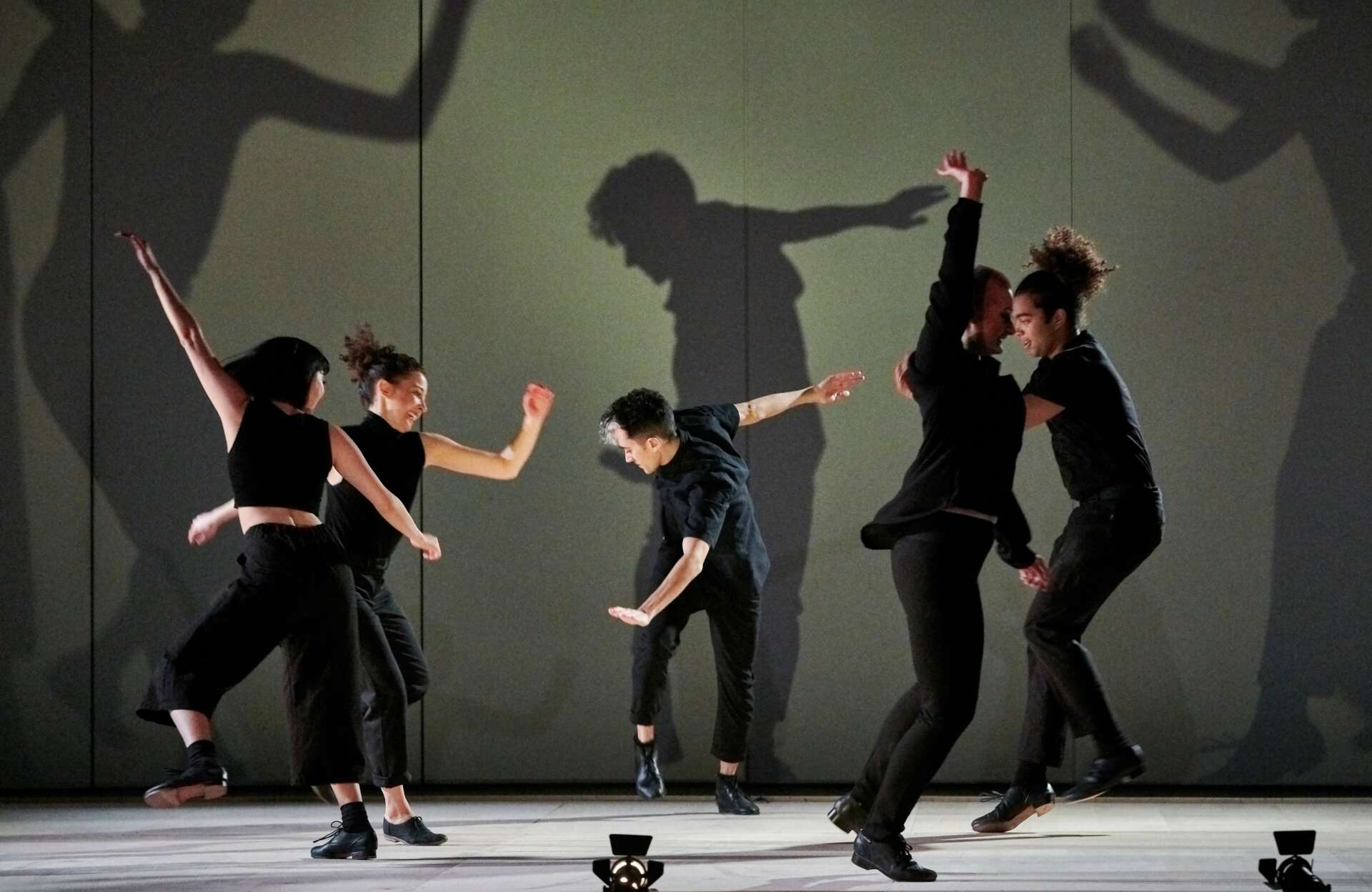Alright – so today we’ve got the honor of introducing you to Caleb Teicher. We think you’ll enjoy our conversation, we’ve shared it below.
Alright, Caleb thanks for taking the time to share your stories and insights with us today. Can you talk to us about a project that’s meant a lot to you?
When I finally “scaled up” enough to do a bigger stage project (more time, more resources, more opportunities), I was able to put together a dream project: SW!NG OUT. With 12 all-star Swing (specifically Lindy Hop) dancers, a 10-piece big band, and a two-act show where the second act was just a swing dance party for the audience, it was a total dream.
I’ve had many enriching experiences as a director/choreographer, but SW!NG OUT is at the top of my list. We shared Swing/Lindy Hop/Jazz dance with a broader audience. We employed 22 performers each night with a show that centered their brilliance as jazz artists. We brought the show to 17 cities in the U.S., including over 30 performances in NYC. I see folks all over the world wearing our signature SW!NG OUT t-shirt… And I’ve met many people on the social dance floor across the country who have said the show inspired them to start swing dancing or to continue their involvement in the community.

Awesome – so before we get into the rest of our questions, can you briefly introduce yourself to our readers.
I’m an NYC-based Director, Choreographer, and Dancer.
I became enthralled with Tap Dance when I was a teenager and, with no clear vision for what I’d do in college, I moved to NYC at 16 to “figure it out”.
I figured it out pretty quickly; after only a few years in NYC, I had enough work across Tap Dance, Lindy Hop, Musical Theater, and Contemporary Dance to pay my rent and eat a lot of boxed mac n’ cheese.
A few years later, my own choreography picked up notice in the NYC dance scene, and I suddenly found myself with enough of my own creative work that I wasn’t performing for other people anymore… I started a dance company (Caleb Teicher & Company) to present my own work and found, again, quick success as a creative lead for concert dance work. I was receiving commissions and presentations from the fancy arts organizations (Lincoln Center, Kennedy Center, Jacob’s Pillow Dance Festival, Works & Process @ The Guggenheim, New York City Center, The Joyce Theater) and touring my work to over 20 cities a year. In between, I had occasional intersections in music (in the recording studio and onstage with Ben Folds, choreographing and performing for Regina Spektor, choreographing AJR’s hit “Bang” music video, solo-ing with the National Symphony Orchestra)… and when the pandemic hit, it seemed to be just a pause in a stream of work that wouldn’t end.
Now, as a freelancer, my creative career is oddly stable… I seem to always have a new project on the horizon, but I feel my interests shifting. My work used to live in the Concert Dance world, but it’s slowly shifting towards music performance and theater-adjacent work. I’m still known for my dancing, but I’m most captivated by my experiences as a director: the decisions that lead to a project’s success, the effective communication of an idea beyond my own body.

In your view, what can society to do to best support artists, creatives and a thriving creative ecosystem?
I find myself on both sides of this question: how do I, an artist, need to be supported? And, as someone who is often the creative lead and is responsible for the successful inner (and outer) workings of collaboration with other artists, how do I provide what my collaborators need to feel supported?
The answer lies in this role-switching: When I’m in one role, I ask myself how I would feel being in the other.
If I’m the artist, I think about what the producer/presenter needs to do their best work for their project. And, when I’m the director/producer/presenter/lead collaborator, I think about how I would feel working “under” my direction.
Every person need many things to do their best work, and these elements are not unique to the arts: we all deserve fair compensation, clear communication, and a committed team that’s invested in the success of the project. It’s not easy — finances, time, and support often seem to be very scarce — but it’s worth the effort.


How did you build your audience on social media?
I have a really contentious relationship with social media. I have enjoyed it in moments but, like eating too much dessert, it can get a little sickening if I’m in it too deep.
I’ve only just recently started being more intentional about how I engage with social media (specifically Instagram) — creating content that I think is well-served in the medium which has its limits: it’s gotta be short, it’s gotta be vertical, and it’s gotta “grab” the viewer within 5 seconds or they’ll scroll away.
My favorite part of being an artist is live performance, but I’m aware that social media is a way to connect with audiences before they choose to buy a ticket. For those, like me, who struggle with its limits, I’d encourage you to just play the “game” in a way that doesn’t make your stomach churn.

Contact Info:
- Website: www.calebteicher.net
- Instagram: @CalebTeicher
- TikTok: @CalebTeicher1
Image Credits
Backstage photo of Chris Celiz & Caleb Teicher by Em Watson Monochrome performance photo of “More Forever” by Robert Altman Works & Process at the Guggenheim Holiday Concert & Dance Party photo by Robert Altman Caleb Teicher & Company’s Lincoln Center Out of Doors performance photo by Em Watson SW!NG OUT performance photo by Grace Kathryn Landefeld


